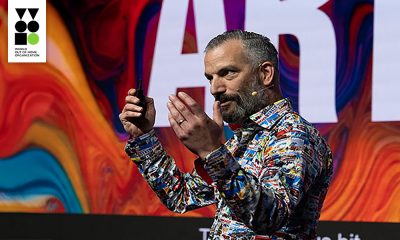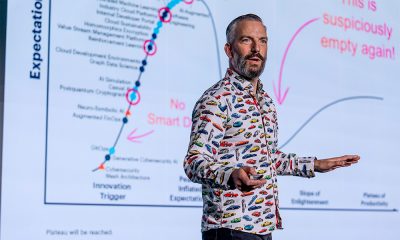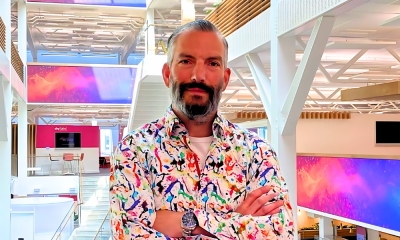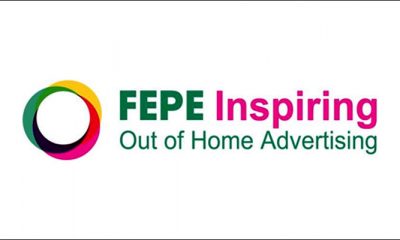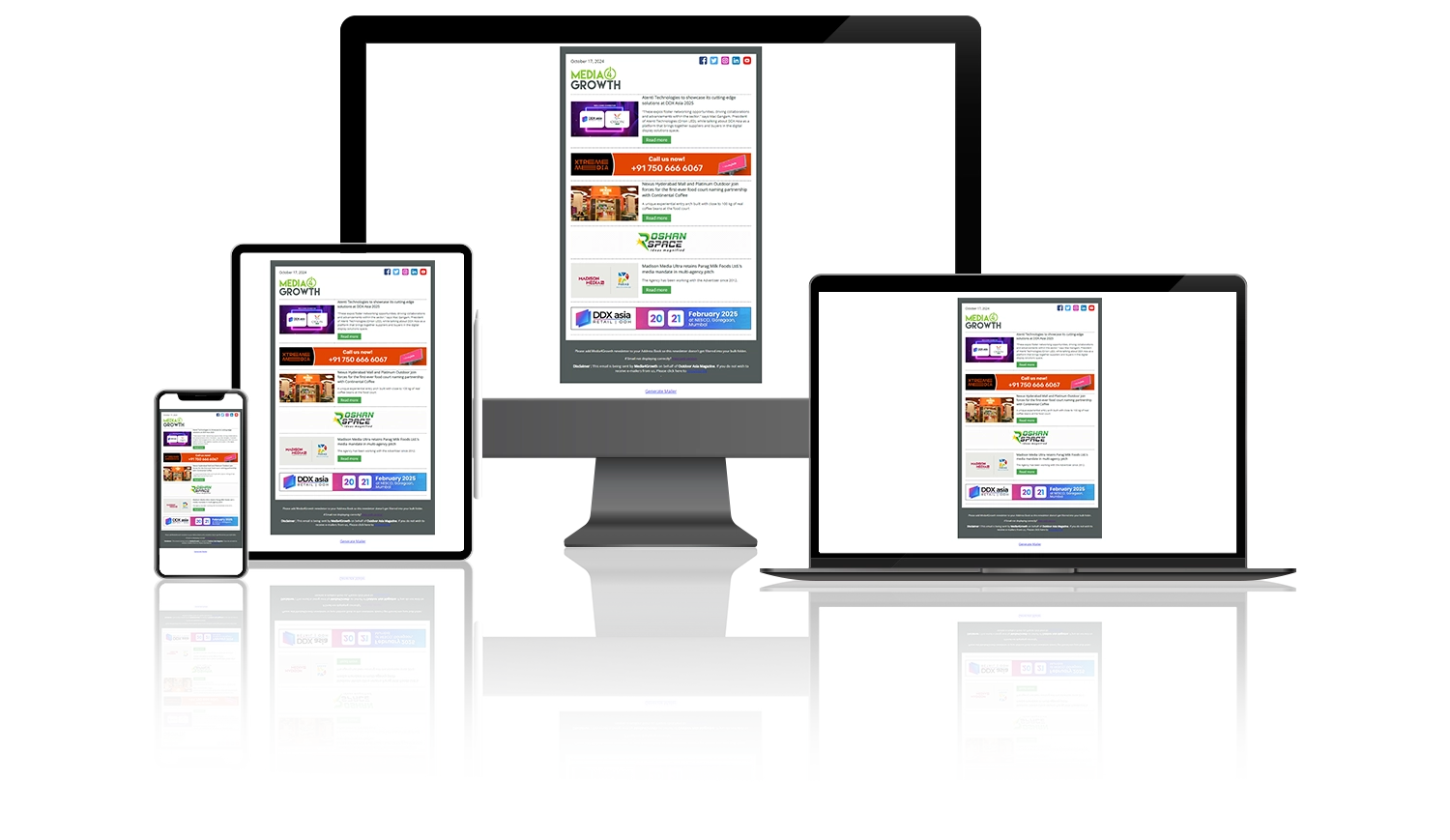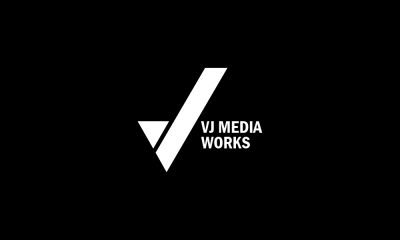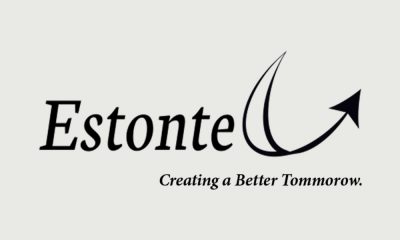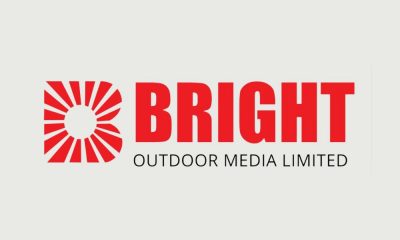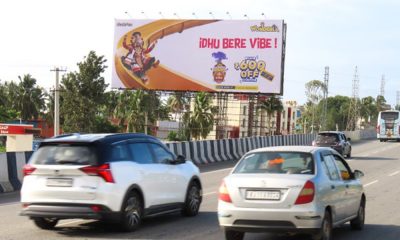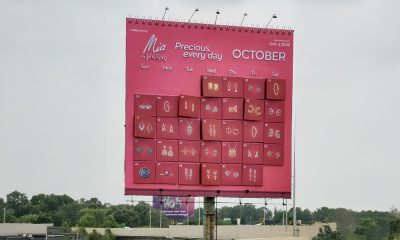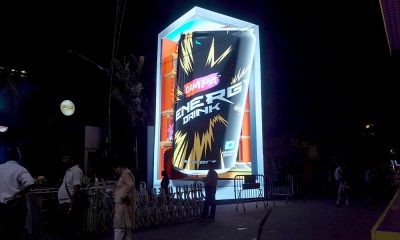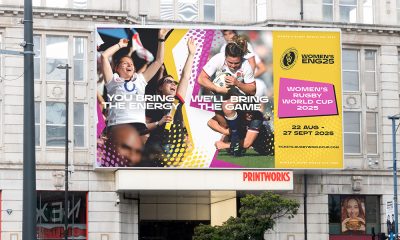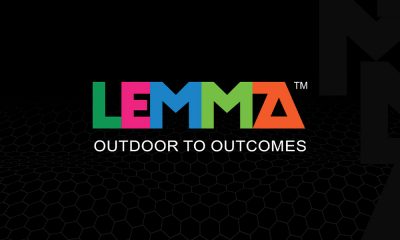Insights
Dino Burbidge unpacks the secret sauce of great OOH creative
Drawing from global examples, Dino Burbidge explained the principles behind OOH that truly works.
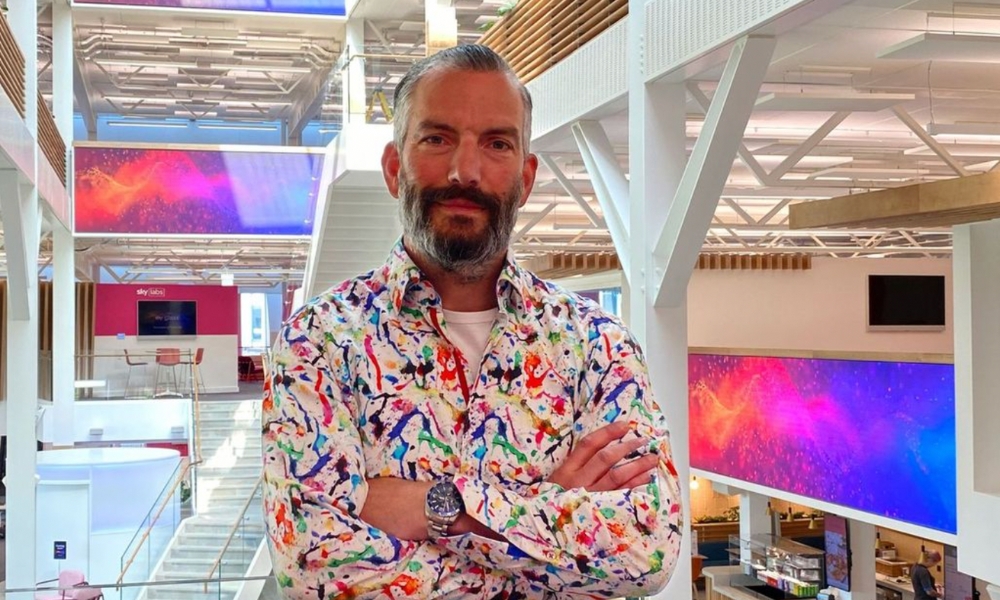
Most OOH creative never reach the level of a masterpiece simply because a few fundamental rules are ignored. That was the key point made by Dino Burbidge, OOH Creative Consultant, Dinova Ltd & Creative In Residence, World Out of Home Organization, who shared his insights on what makes an OOH campaign truly outstanding.
Dino remarked, “My definition of an OOH masterpiece is fairly weird. It’s weird for a reason. A masterpiece is often defined as ‘a work of outstanding creativity, skill, or workmanship’, but that’s not enough for OOH. It absolutely must be effective too, and the bigger, the better. I’d argue that achieving the biggest effect with the most efficient campaign is also a big masterpiece factor. Show me an OOH masterpiece that performed poorly or was overly complicated… I’ll wait.”
According to him, the blunt truth is that “most OOH creative is destined to end up in the ‘non-masterpiece’ bucket just because they didn’t apply a few basic rules.”
Your brand is your best weapon
Dino emphasised that brand assets are one of the strongest creative weapons. “If you have a brand that people recognise, use it. Heavily. A strong brand is one of the most effective weapons a creative person can deploy. We’re talking logos, colours, fonts, product shapes or what marketers call a ‘fluent device character’ – yes, that’s your fluffy mascot.”
Rejecting the common advice to “make the logo smaller,” Dino insisted, “No. Make it bigger. Put it at the top.” He pointed to System 1 research which found that globally, 2 out of 10 viewers often have no idea what brand an ad is for. As an example of branding done right, he cited the 2024 Barbie movie campaign, which simply used Barbie’s iconic pink and a date in the Barbie font.
Be efficient with your audience’s time
Another critical principle, Dino said, is respecting the audience’s fleeting attention span. “Assume the 2-second rule. Sorry to be the bearer of the awkward truth but most of your audience will barely glimpse at your ad, not stop and stare. Be efficient with their time and your design.”
He pointed to Apple as a brand that excels at communicating complex ideas with achingly simple visuals. “If you find yourself writing a second sentence on your ad (and it’s not a cross-track or long-dwell format), you’re already in trouble,” he noted.
A dance of creative and location
For Dino, context is critical. “Context is King, so actively use it. A great ad in the wrong place (or time) will struggle. As will the wrong ad in a great place. But a great ad in the right place is already set up for success.”
He described the need for collaboration: “It’s a dance between the creative agency and media planning agency… that mostly doesn’t happen. I’ve only ever seen this improve the results. I can’t stress this enough, dance (talk) more with your opposite agency frenemy. You’ll soon find out they are trying to solve the same problems as you are.”
Let them work it out
Another hallmark of OOH masterpieces, Dino explained, is giving the audience a small challenge. “Surprise! Or at least, make your audience work for the payoff. What’s otherwise known as the aha!”
He cited research to prove the point: “System 1 and Effie calculated that dull campaigns pay back 40% less. It literally pays to make your ads more interesting.” He added that when people invest mental effort in understanding something, they value it more, much like the Ikea Effect. Specsavers, he noted, consistently uses this approach and “keep winning the highest OOH awards. That’s no accident.”
Is it rooted in deep insights?
Dino also stressed that the best creative is often born out of genuine insight rather than mere facts. He illustrated this with the example of elevators: the fact is that people got frustrated by slow rides, but the insight was that giving them something to do—like mirrors—reduced frustration.
He said, “A single, deep insight can make all the difference.” He highlighted Spotify’s “Thanks 2016, It’s Been Weird” campaign, where data revealed quirky playlist uses, leading to a witty and award-winning campaign.
Make the ‘super touchpoint’ strike an emotional chord
Finally, Dino underscored the need for emotional connection. “Possibly one of the biggest tips is to get emotional. Emotional ads work better. As marketing sage Mark Ritson puts it ‘people ultimately want to feel something when interacting with brands and marketing’.”
He referred to an Effie study that concluded high emotion campaigns are broadly 55% more effective at driving results across America, UK and Europe. According to Dino, OOH has a unique advantage as what Ian Gibbs of the Digital Media Association calls a “Super Touchpoint.”
“What does an emotional ad actually look like?” Dino asked, before listing examples: “Humour, nostalgia, drama, joy, love, hate, disgust, embarrassment, or maybe mix them to create controversy.” Brands like Nike, Always, Guinness, Geiko, Skittles and Marmite, he pointed out, all leverage emotion and have reaped awards in return.
The big takeaway
Dino concluded that the compounding effect of these principles is what takes a campaign into masterpiece territory. “Create a simple, well-branded, emotional ad that’s based on smart insight, is easy to understand but in which the magic of the payoff is delayed, then you’re probably in the top 5% of ads being created at any moment in time.”
And crucially, he reminded that this is not the job of creatives alone. “This isn’t just a creative pursuit, read that list again and much of it falls to media planners, strategist, writers, insight teams and clients too. Now you know some of the secrets, make your next campaign… a masterpiece!”
-

 People
PeopleSnehita Chakravorty joins Yum! Brands – KFC India as Marketing Manager
-
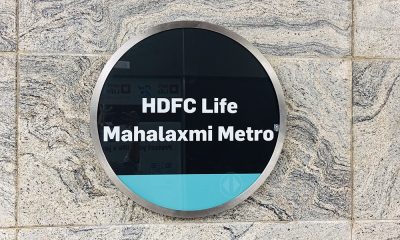
 Contracts & Investments
Contracts & InvestmentsHDFC Life celebrates 25 years with branding of Mahalaxmi Metro Station
-

 People
PeopleOcean Outdoor announces changes to UK and Group leadership teams
-

 Digital Display
Digital Display12 new Earth Series LED Screens illuminates Mumbai

